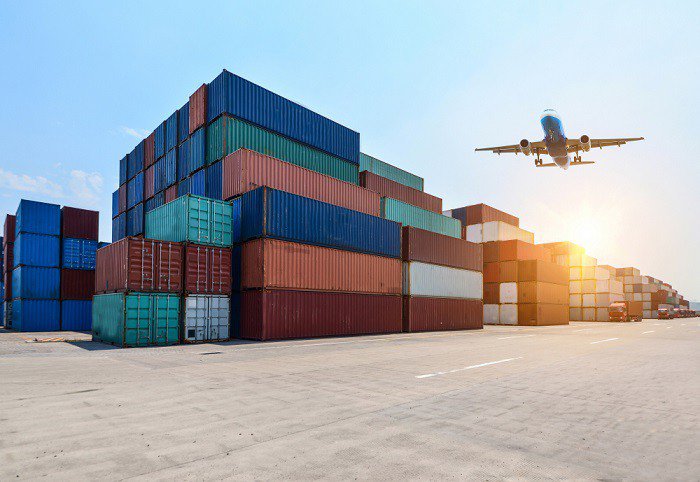
Supply chain disruptions have become more frequent in today's connected and globally integrated world. The susceptibility of supply chains has been brought to light by occurrences like pandemics, natural disasters, and geopolitical unrest. Businesses are becoming more aware of the significance of building supply chain resilience to lessen the effects of disruptions.
This blog discusses methods for boosting supply chain resilience in various disruptions. It also explores the concept of supply chain resilience. We will also explore the significance of sea freight rates, supply chain management function, ocean freight shipping effects, the emergence of digital freight marketplaces, and shipping costs.
Understanding Supply Chain Resilience
The ability of a company to foresee, react to, and recover from unanticipated disruptions while preserving operational continuity is referred to as supply chain resilience. Resilient supply chains are created to lessen the effects of disruptions, minimize downtime, and facilitate quick recovery. Businesses that increase their resilience can better withstand unforeseen circumstances while preserving their reputation, customer satisfaction, and profitability.
Role of Supply Chain Management
The development of resilience requires effective supply chain management. Coordinating the flow of products, services, data, and money between various supply chain participants is necessary. Supply chain managers are crucial in spotting weaknesses, creating contingency plans, and implementing risk reduction techniques. They need to build trusting relationships with their suppliers, uphold transparency, and use technology to improve visibility and traceability throughout the supply chain.
Impact of Ocean Freight Shipping
Global supply chains greatly rely on ocean freight shipping. However, there may be long-lasting effects if there are industry disruptions like port congestion, strikes, and capacity issues. Businesses can increase their resilience by diversifying their modes of transportation, retaining connections with several carriers, and putting emergency plans into action. Additionally, they can use technology to optimize routes, track shipments in real time, and minimize disruptions through prompt action.
The Emergence of Digital Freight Marketplaces
The rise of digital freight marketplaces has revolutionized supply chain management. By connecting shippers and carriers, these platforms make it possible for transportation needs to be effectively matched. They provide better accessibility, flexibility, and visibility across a large carrier network. By locating alternate routes, carriers, and shipping options through the use of digital freight marketplaces, businesses can quickly adjust to disruptions. These platforms also enable seamless documentation, payment, and communication processes, streamlining operations and lowering administrative burdens.
Significance of Sea Freight Rates
Sea freight rates immediately impact the resilience and costs of the supply chain. Rate swings brought on by shifts in demand-supply dynamics, geopolitical events, and fuel prices can significantly impact profitability. Businesses can reduce this volatility using a variety of tactics, including long-term contracts, rate hedging, and continuous market monitoring. Working with freight forwarders who are knowledgeable about your industry can help you cut costs and navigate the complexities of the market. Data analytics can also offer information on rate trends, empowering businesses to make wise decisions.
Strategies for Building Supply Chain Resilience
- Assessment of Potential Risks and Development of Scenarios: To foresee disruptions, thoroughly evaluate potential risks. This makes proactive planning and vulnerability detection possible.
- Diversification: Steer clear of relying too heavily on particular suppliers, modes of transportation, or geographic areas. To lessen the impact of disruptions in a single area, diversify your carrier and supplier networks.
- Collaboration and Information Sharing: Develop enduring connections with vendors, transporters, and business associates. To deal with disruptions as a team, work together on backup plans, share information, and communicate clearly.
- Strong Technology Integration: To improve visibility, traceability, and decision-making abilities, use technological solutions like supply chain management software, real-time tracking systems, and data analytics.
- Agile Response Systems: Implement agile response systems to adjust to disruptions quickly. This entails putting safety stock strategies, dynamic routing, and alternative sourcing practices into practice.
- Continuous Improvement and Learning: Analyze supply chain performance regularly. Recognize opportunities for improvement, take lessons from previous disruptions, and update resilience strategies as necessary.
- Continuous Improvement and Learning: Regularly assess and evaluate the performance of the supply chain. Recognize opportunities for improvement, take lessons from previous disruptions, and update resilience strategies as necessary. Establish a feedback loop with carriers and suppliers to address problems and improve procedures.
- Maintaining the ideal balance: Maintaining the ideal balance between inventory levels and demand projections is known as inventory optimization. By implementing demand-driven strategies, businesses can reduce excess inventory, enhance cash flow, and react to disruptions more quickly.
- Planning for Business Continuity: Create thorough plans for business continuity that specify what should be done during disruptions. This entails determining crucial operations, setting up backup facilities, and implementing redundancy measures.
Conclusion
Disruptions in the supply chain are now a common problem for businesses in the modern business environment. Supply chain resilience development is essential for operational continuity and to reduce the effects of these disruptions. Businesses can improve their capacity to react and recover quickly by adopting risk assessment, diversification, collaboration, and technology integration strategies. Supply chain resilience can also be increased by utilizing supply chain management, online freight marketplaces, and keeping up with sea freight rates. Organizations can safeguard their competitive advantage, guarantee customer satisfaction, and prosper in a volatile business environment by investing in resilience-building measures.
You can assess risks, diversify your suppliers and modes of transportation, and create cooperative partnerships with our extensive suite of solutions. You can access a huge network of dependable carriers using our online freight marketplace, ensuring smooth shipping operations even during trying times. As a result of our efforts to keep you informed about sea freight rates, you can better make calculated choices that reduce costs and increase resilience. Choose FreightMango to give your business access to the power of a resilient supply chain and avoid being slowed down by interruptions.





 Get instant quote
and compare offers in real time
Get instant quote
and compare offers in real time